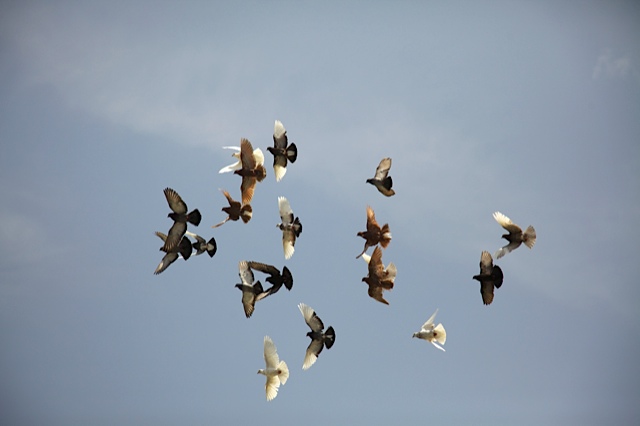One of nature’s most fascinating phenomena is the collective behaviour of animals. A shoal of fish, a swarm of locusts, and a colony of ants can all act as superorganisms, where the group as a whole makes collective decisions.
Equally interesting are smaller groups that also have this peculiar behaviour, such as a flock of migratory birds that forms a “V” in the sky. Researchers have observed and studied this particular grouping of animals for many decades, yet little is known about their social structure. Do they have leaders? If so, are their roles similar to humans in anyway?
The lack of understanding of this behaviour intrigued Máté Nagy, a zoologist at University of Oxford. He thought that studying at least one species may shed light on the occurrence of this behaviour in the rest of the animal kingdom, including humans.
In a paper published in the Proceedings of the National Academy of Sciences, Nagy and his colleagues studied the behaviour of domestic pigeons (Columba livia). Their aim was to study social dominance in one task and use the results to analyse the behaviour of leaders (if there were any) in a new task.

Pigeon formation.
For this, they tagged three groups of ten pigeons with a barcode and programmed computers to follow the movements of these pigeons using a video feed. In the first task, designed to study social dominance, the three groups of pigeons were left with a feeding cup. The group tracked three types of behaviour: feeding-queueing (a measure of an individual’s access to food), approach-avoidance (a measure of the interactions between individuals) and pecking order (measure of aggression displayed through fighting and chasing).
After some number-crunching that took the three types of behaviour into consideration, the simple feeding task showed that a social hierarchy existed among pigeons. Nagy was able use that data to identify the socially dominant individuals within each group.
Next, each group was let free so that Nagy could determine if the socially dominant pigeons took on the job of leaders when the pigeons flew as a flock. This time, the pigeons were fitted with a GPS tracker, which allowed Nagy to track the positions of each individual relative to the rest of the flock.
Here Nagy found that the leaders in flock-flying were different from those that were socially dominant during the feeding exercise. These results are unlike what you would see with gray wolves or chacma baboons, where the socially dominant individual may also lead the group. The leaders did have some common features, though. The socially dominant individuals were more aggressive than average flock member and had a comparatively larger body.
Because of the complications involved in flock-flying, it is possible that a somewhat less aggressive, and possibly better informed individual takes the leading position. However, there was no relation between leadership and age, so it wasn’t that the more experienced flyers lead the flock.
About Pigeon Patrol:
Pigeon Patrol Products & Services is the leading manufacturer and distributor of bird deterrent (control) products in Canada. Pigeon Patrol products have solved pest bird problems in industrial, commercial, and residential settings since 2000, by using safe and humane bird deterrents with only bird and animal friendly solutions. At Pigeon Patrol, we manufacture and offer a variety of bird deterrents, ranging from Ultra-flex Bird Spikes with UV protection, Bird Netting, 4-S Gel and the best Ultrasonic and audible sound devices on the market today.
Voted Best Canadian wholesaler for Bird Deterrent products four years in a row.
Contact Info: 1- 877– 4– NO-BIRD (www.pigeonpatrol.ca)

